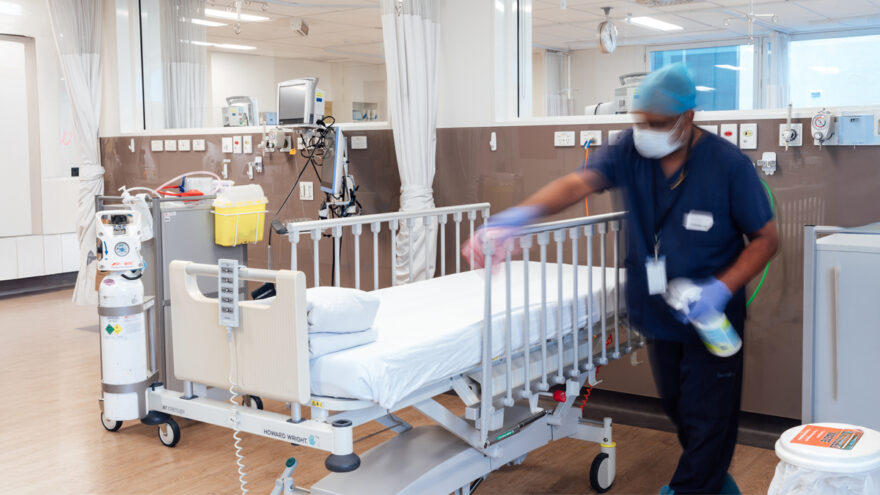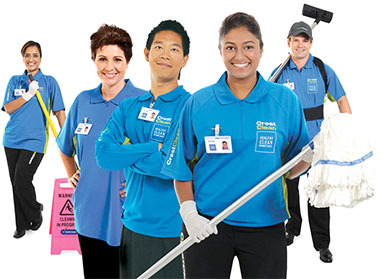Why healthcare cleaning impacts patient safety

As a part of CrestClean’s commitment to continuous learning and improvement to remain at the forefront of industry advancements, Liezl Foxcroft, General Manager of the Master Cleaners Training Institute, recently attended a healthcare cleaning webinar. The webinar “Why Healthcare Cleaning Impacts Patient Safety”, was presented by world-renowned microbiologist, Professor Stephanie Dancer.
The webinar explored the relationship between cleaning practices in healthcare settings and patient safety, offering valuable research-based insights that at times challenged conventional cleaning methods.
Key insights from the seminar:
Electrolysed water as a cleaning agent
Professor Dancer discussed the potential of using electrolysed water as a cleaning agent to avoid antimicrobial resistance. While this method shows potential, there is still a lack of substantial research and evidence to fully support its widespread adoption. However, this highlights the need for the industry to explore alternative cleaning agents that minimise the risk of resistance.
Patient-Acquired Infections (HAIs)
The webinar highlighted that 60% of HAIs are exogenous, often brought in by other patients and transferred through high-touch surfaces. The role of air flow in the transmission of infections was also touched upon, though the primary focus remained on surface contamination.
Hand Hygiene
Hand hygiene was emphasised as the number one factor in preventing infections, hand hygiene is crucial in healthcare settings. This aligns with CrestClean’s ongoing efforts to promote effective hand hygiene practices, as seen in our recent hand hygiene training videos.
Biofilm and cleaning techniques
Professor Dancer discussed the presence of biofilm on surfaces, where harmful pathogens can thrive underneath. The highest risk sites, that are the most frequently touched beside the patient are the top of beside lockers, over-bed table, bed frames and controls, light switches, clinical equipment, bedside chair, and curtains. She recommended a specific cleaning technique: one wipe, one site, and one direction – before discarding. This cleaning technique is focused on removing pathogens from surfaces, rather than trying to kill them.
The discussion raises questions about the best cleaning practices, especially in medical settings, and whether vigorous cleaning might inadvertently break the biofilm, releasing the germs, and causing more harm than good.
Alternative decontamination methods
The webinar explored various alternative methods for decontaminating hands, patients, surfaces, and air, including steam, sunlight, and even natural substances like lemons, vinegar and bicarbonate of soda. While these methods are interesting, their effectiveness and practicality in healthcare settings require further investigation.
Automated decontamination devices
Automated devices using H2O2 or UV-C light were discussed for their environmental impact and potential health risks. The insight was that while powerful, these devices can introduce new challenges, such as generating harmful indoor air pollutants and causing microbial resistance.
The role of cleaners
Professor Dancer also highlighted the often-overlooked role of cleaners in maintaining patient safety. Cleaners are an important part of Infection Prevention and Control (IPC) teams, and their contributions are vital to the healthcare environment.
While the webinar provided a wealth of information, it also highlighted the complexity of cleaning in healthcare settings. At CrestClean, we remain committed to using best practices and products to ensure that our healthcare cleaning services not only meet, but exceed, industry standards.
We recognise the importance of staying informed about new research and technologies, but we also understand the need for caution before implementing changes that could have wide-reaching implications.
As we continue to monitor the latest developments in the industry, CrestClean will ensure that our cleaning practices are backed by research and tailored to meet the specific needs of the environments we serve. We remain dedicated to protecting the health and safety of both our clients and our cleaning teams, while leading the way in healthcare cleaning.
